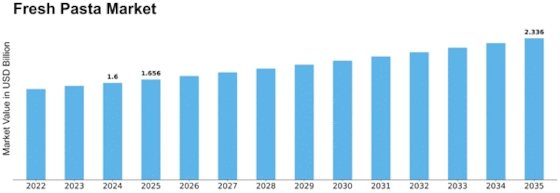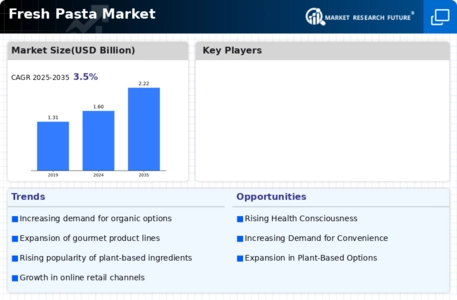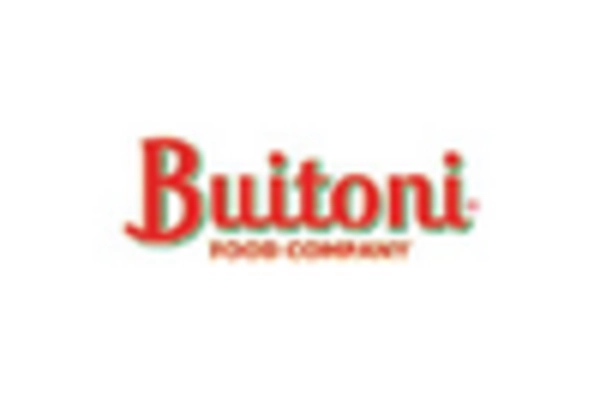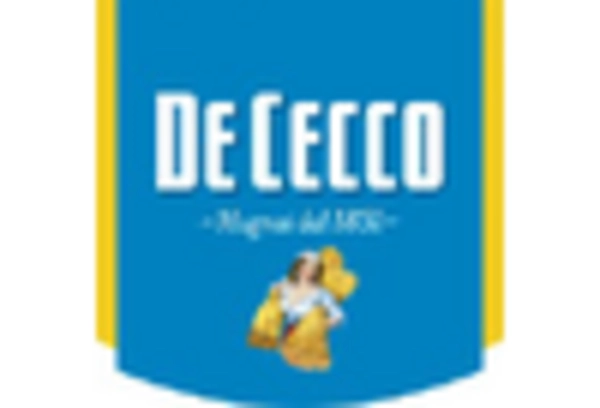Fresh Pasta Size
Fresh Pasta Market Growth Projections and Opportunities
The fresh pasta market is influenced by various market factors that contribute to its dynamics and growth. One significant factor is consumer preference for high-quality, authentic, and convenient food options. As consumers become more health-conscious and seek out fresh, natural ingredients, the demand for fresh pasta made from premium flour and real eggs has risen. This shift in consumer preferences is driven by a desire for better taste and nutritional value.
Another crucial market factor is the increasing trend of home cooking and meal preparation. With the rise of cooking shows, food blogs, and social media platforms showcasing homemade recipes, consumers are more inspired to try their hand at preparing fresh pasta at home. This trend has led to a surge in the sales of fresh pasta ingredients, including pasta sheets and dough, contributing to the overall growth of the market.
Furthermore, the influence of cultural diversity and globalization plays a significant role in shaping the fresh pasta market. As people become more open to trying different cuisines, there is a growing demand for a variety of fresh pasta options, such as ravioli, tortellini, and gnocchi, each representing a unique culinary tradition. This diversity in product offerings caters to the evolving tastes and preferences of consumers, driving market expansion.
Supply chain dynamics and raw material availability are also critical market factors impacting the fresh pasta industry. The accessibility of high-quality flour, eggs, and other essential ingredients directly affects the production and pricing of fresh pasta products. Fluctuations in raw material costs can impact the overall production costs for manufacturers, influencing product pricing and market competitiveness.
Additionally, economic factors such as income levels and disposable income play a crucial role in shaping the fresh pasta market. When disposable income levels rise, consumers are more willing to spend on premium and specialty food items, including fresh pasta. On the contrary, during economic downturns, consumers may opt for more budget-friendly alternatives, impacting the market dynamics.
Technological advancements and innovation in food processing also contribute to the fresh pasta market's growth. Improved packaging methods, extended shelf life, and innovative production techniques enhance the overall quality and convenience of fresh pasta products. This, in turn, attracts a broader consumer base and drives market expansion.
Government regulations and policies regarding food safety and labeling also influence the fresh pasta market. Strict adherence to quality standards and transparent labeling practices build consumer trust and confidence in the product. This regulatory framework ensures that manufacturers maintain high standards in production, contributing to the overall credibility of the fresh pasta market.










Leave a Comment